How to Get SOC 2 Certification: Complete Guide (2025)
Learn how to get SOC 2 certification with our 6-step guide. Covers costs ($5K-10K with Comp AI vs $15K+ others), timelines, Type I vs Type II in 2025.
- Home
- Compliance HubHub
- How to Get SOC 2 Certification: Complete Guide (2025)
If you're running a SaaS company or handling customer data, you've probably heard this before: "We need your SOC 2 report before we can move forward."
For many B2B companies, SOC 2 isn't just nice to have anymore. In fact, 66% of B2B buyers now demand a SOC 2 report from vendors as part of their due diligence process. It's become table stakes for enterprise sales.
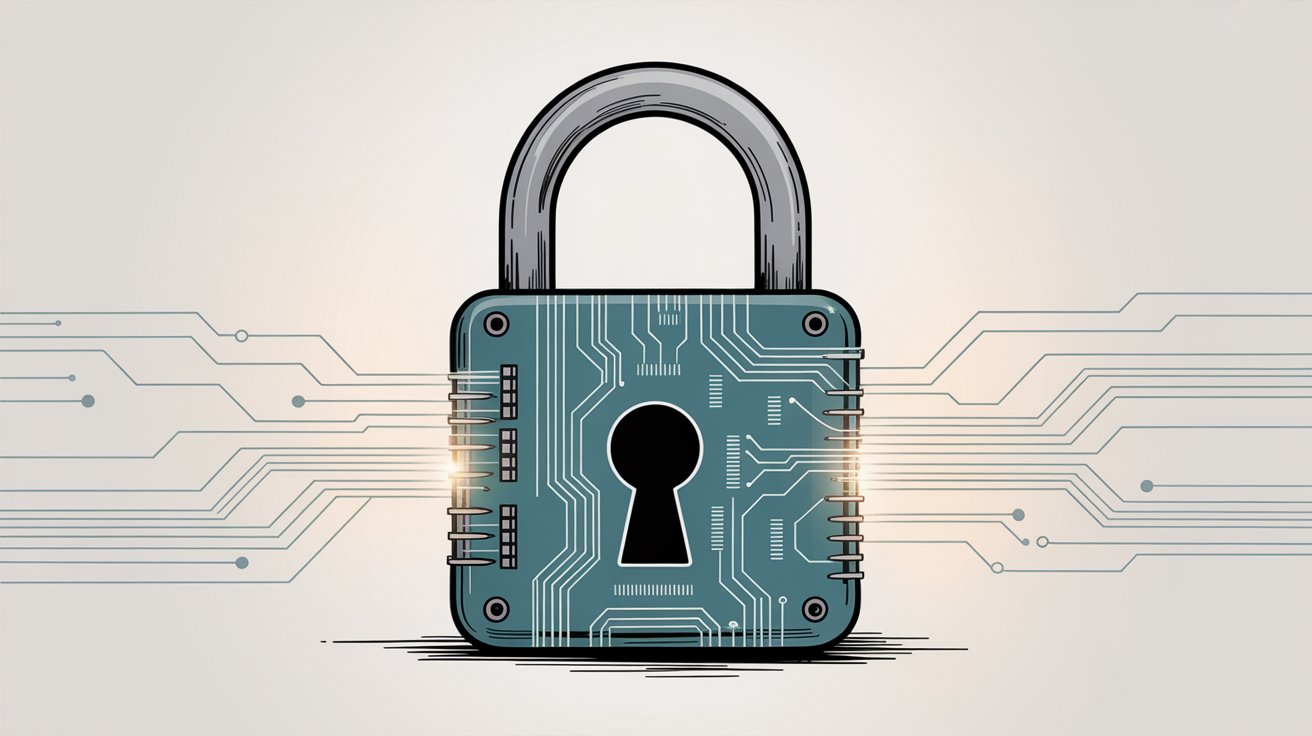
But here's the reality: SOC 2 certification can feel overwhelming. The technical jargon, the audit requirements, the documentation demands. Most companies spend months preparing for their first SOC 2 audit, only to discover gaps at the last minute.
This guide breaks down everything you need to know about getting SOC 2 certified in 2025. You'll learn what SOC 2 actually is (and what it isn't), how long the process really takes, what it costs, and most importantly, how to prepare effectively so you pass on the first try.
What is SOC 2 Certification and Why Does it Matter?
First, let's clear up a common misconception: there's no such thing as a "SOC 2 certificate" you can frame and hang on your wall.
SOC 2 is an independent attestation performed by a licensed CPA firm. What you receive is a SOC 2 report that proves your company meets specific security standards defined by the American Institute of CPAs (AICPA).
The AICPA serves as the authoritative body for SOC 2 standards, providing the official framework and guidelines that auditors follow:

The audit evaluates your controls across five Trust Services Criteria:
Security (mandatory for all SOC 2 audits)
- Protection of systems and data from unauthorized access
- The foundation of every SOC 2 report
Availability (optional)
- System reliability and uptime as promised
- Disaster recovery and business continuity capabilities
Processing Integrity (optional)
- System processing is complete, accurate, and authorized
- Data is processed correctly and on time
Confidentiality (optional)
- Safeguarding sensitive information like business secrets and customer data
- Protection from unauthorized disclosure
Privacy (optional)
- Proper handling of personal information
- Compliance with stated privacy policies and regulations
Most companies start with Security plus one or two additional categories based on what they promise customers. For example, if you guarantee 99.9% uptime, you'll want Availability. If you handle sensitive customer data, Confidentiality makes sense.
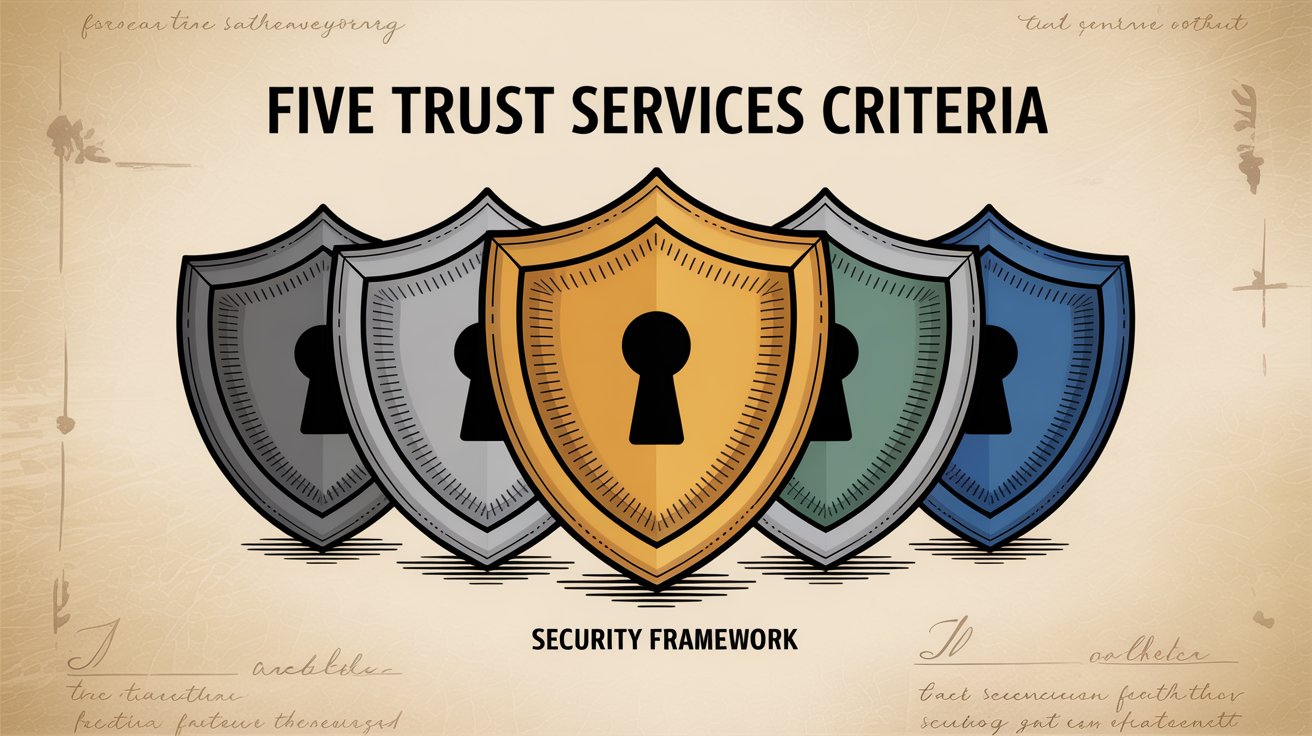
SOC 2 Type 1 vs Type 2: Which Audit Do You Need?
When you start planning for SOC 2, you'll need to choose between two report types. The difference between SOC 2 Type 1 and Type 2 is significant:
| Feature | SOC 2 Type I | SOC 2 Type II |
|---|---|---|
| What It Tests | Controls exist at a point in time | Controls work effectively over time |
| Typical Timeline | 2-3 months | 3-12 months observation period |
| Audit Scope | Snapshot assessment | Continuous operational review |
| Credibility | Proves design | Proves operational effectiveness |
| Best For | Quick compliance proof | Long-term trust building |
| Price with Comp AI | $5,000-10,000 | $5,000-10,000 |
| Price with others | $15,000+ | $15,000+ |
What is SOC 2 Type I and When Should You Choose It?
A Type I audit evaluates whether you have the right controls at a specific point in time. The auditor essentially asks: "As of today, does this company have the required security controls and policies in place?"
For example, do you have an access control policy? Is multi-factor authentication enabled? Type I confirms these controls exist and are properly designed, but it doesn't test whether they're actually working over time.
Type I is useful as a quick compliance snapshot. Many startups get a Type I report first to satisfy immediate customer demands while working toward full operational maturity. You can potentially achieve a Type I in a couple of months once your controls are in place.
What is SOC 2 Type II and Why is it More Credible?
Type II goes deeper. It evaluates the operating effectiveness of your controls over a period of time, typically 3 to 12 months.
The auditor doesn't just check if you have an incident response plan. They verify that you actually conducted the required quarterly drills. They confirm you maintained access logs every month. They sample evidence throughout the entire period to prove you consistently followed your security procedures.
Because Type II proves sustained compliance, it's considered the gold standard. Most enterprise customers and regulators prefer Type II reports because they show your controls aren't just paper policies but part of everyday operations.
Which SOC 2 Report Should You Get First?
If you're just starting with compliance, a Type I can get you in the door faster. But many clients will eventually ask for a Type II within the next year.
The common path: Get a Type I report to unblock immediate deals (potentially within 2-3 months), then follow up with a Type II after 3-6 months of running those controls consistently.
If you have time and resources, you can go straight for Type II. Just remember you'll need to maintain all controls consistently over the observation period before the auditor can issue the report.
COMPLIANCE TIMELINE NOTE: SOC 2 reports are generally valid for 12 months from the audit period's end. This means annual renewal audits to maintain your certification.
How to Get SOC 2 Certified: 6-Step Process
Getting SOC 2 certified follows a logical progression. Here's how to approach it:
Step 1: How to Define Your SOC 2 Audit Scope
Start by determining exactly what will be evaluated in your SOC 2 audit.
Choose your Trust Services Criteria
Security is mandatory. Beyond that, select additional categories based on your business needs and customer requirements.
A SaaS platform with uptime SLAs should include Availability. A fintech processing payments might need Processing Integrity. A healthcare data platform would want Privacy and Confidentiality.
Don't audit all five categories if they're not applicable. Scoping in only relevant principles saves effort and cost.
Identify systems in scope
Your "in scope" systems typically include:
→ Product infrastructure (cloud platforms, databases, servers)
→ Supporting IT systems (identity management, logging, monitoring)
→ Internal processes related to security (HR onboarding/offboarding, helpdesk)
If you host on AWS and use GitHub for code management, those would be in scope. Define the boundaries clearly: which entity, which IT environments, which services are covered by this audit.
Decide Type I vs Type II
If you need Type II, you'll also decide the audit period length. Common choices are 3, 6, or 12 months for the first Type II. A 3-month period balances speed with credibility for first-timers.
For Type I, you just need to set an audit date. This choice affects your timeline significantly: Type II can't be completed until the observation period ends (plus audit time), while Type I can be done as soon as you're ready.
Set clear objectives
Why are you getting SOC 2? To satisfy a specific client? To enter enterprise sales? To genuinely improve security?
Clarify this for management buy-in and resource allocation. If there's a hard deadline (a big customer needs you compliant by Q3), start planning backward from that date.
Step 2: How to Perform a SOC 2 Readiness Assessment
Before the formal audit, conduct a practice audit to evaluate your current compliance posture and identify what needs fixing.
During a readiness assessment:
Review existing security controls
Do you have written policies for access control, incident response, change management, vendor management? Are technical measures in place like firewalls, encryption, logging, backups?
Create a SOC 2 compliance checklist of requirements and mark what you have versus what's missing.
Gather and inspect documentation
Review policy documents, architecture diagrams, risk assessments, employee training records, system configurations, and audit logs.
Companies often discover that procedures exist informally but aren't documented. If it's not documented, it didn't happen in the eyes of an auditor.
Assess monitoring and reporting tools
SOC 2 expects continuous security oversight. Check if you have tools for infrastructure monitoring, intrusion detection, and access logging. If not, you'll need to set them up or use manual processes temporarily.
Identify gaps and weaknesses
The output should be a gap analysis report listing where you don't meet SOC 2 compliance requirements.
| Gap Severity | Description | Typical Remediation Time |
|---|---|---|
| Critical | Missing mandatory controls (MFA, encryption) | 1-2 weeks |
| High | Incomplete policies or untested procedures | 2-4 weeks |
| Medium | Documentation gaps or informal processes | 1-3 weeks |
| Low | Minor improvements or optimizations | Days to 1 week |
You might discover you lack a formal disaster recovery plan or haven't been doing vendor risk assessments. Mark each gap's severity and effort to fix.
You can perform this internally using SOC 2 checklists or hire a compliance consultant. Many companies also use automated compliance platforms to run a readiness scan and flag missing controls.
Here's what a modern readiness assessment tool looks like in practice:
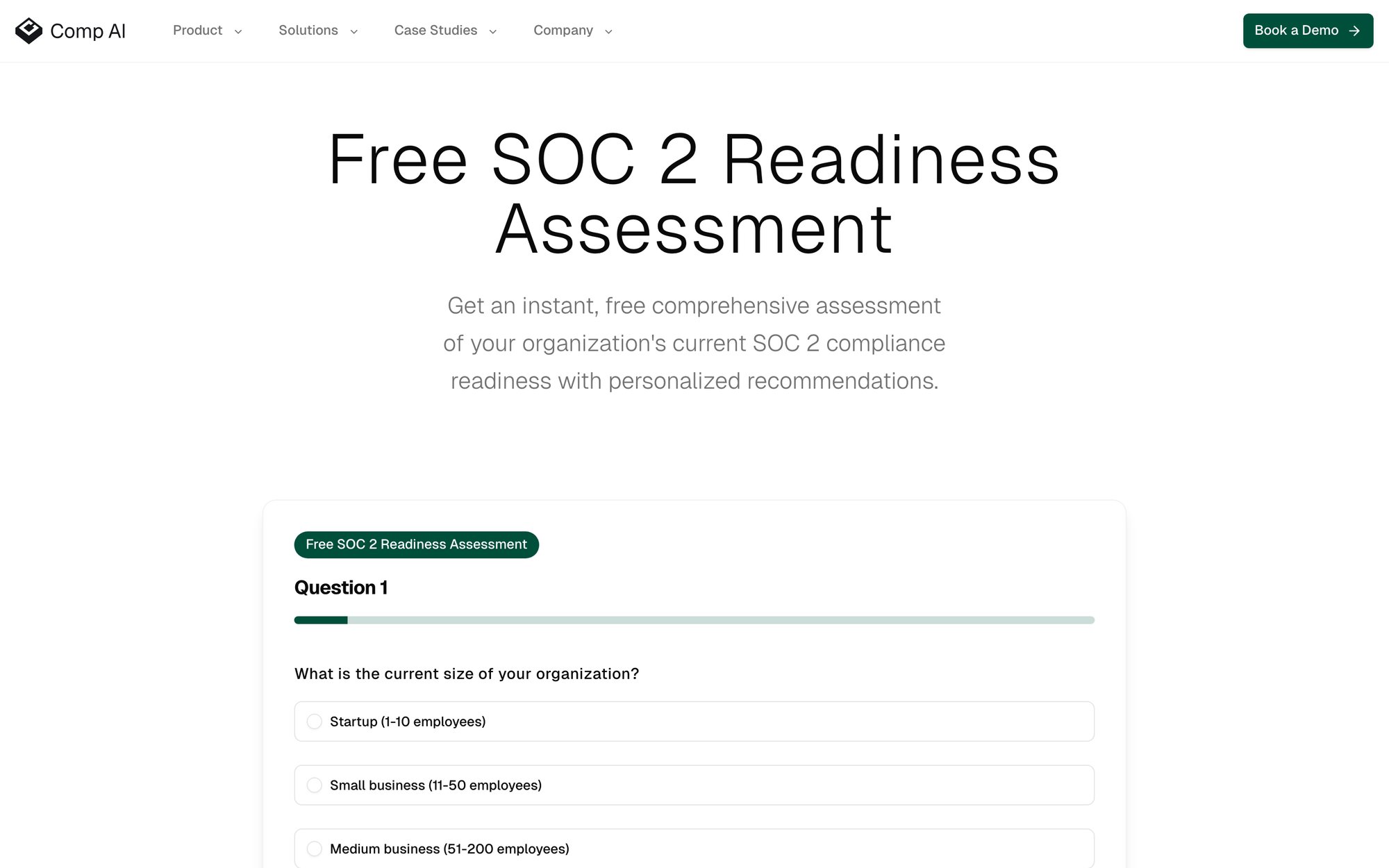
Investing time in a thorough readiness assessment saves you from painful surprises during the actual audit.
Step 3: What Security Policies and Controls Does SOC 2 Require?
Based on your gap analysis, fix issues by setting up missing controls, policies, and processes. This is usually the most labor-intensive phase.
Formalize your security policies
SOC 2 requires documented policies covering core security areas. Your organization needs policies for:
Access & Identity
- Access Control & Identity Management: account creation/removal, password standards, MFA, least privilege
- Data Security & Encryption: protecting data at rest and in transit, key management, data classification
Operations
- Change Management: software and infrastructure change procedures, approvals, testing
- Incident Response: detection, escalation, communication, remediation steps
Business Continuity
- Business Continuity & Disaster Recovery: backup procedures, DR sites, RTO/RPO targets
- Vendor Management: assessing and monitoring third-party security, due diligence, contracts
Training
- Security Awareness Training: documented employee training and policy acknowledgment
These policies need to be written AND enforced. Auditors will verify you follow your own policies. If your Access Control policy requires MFA, they'll check that every account has it enabled.
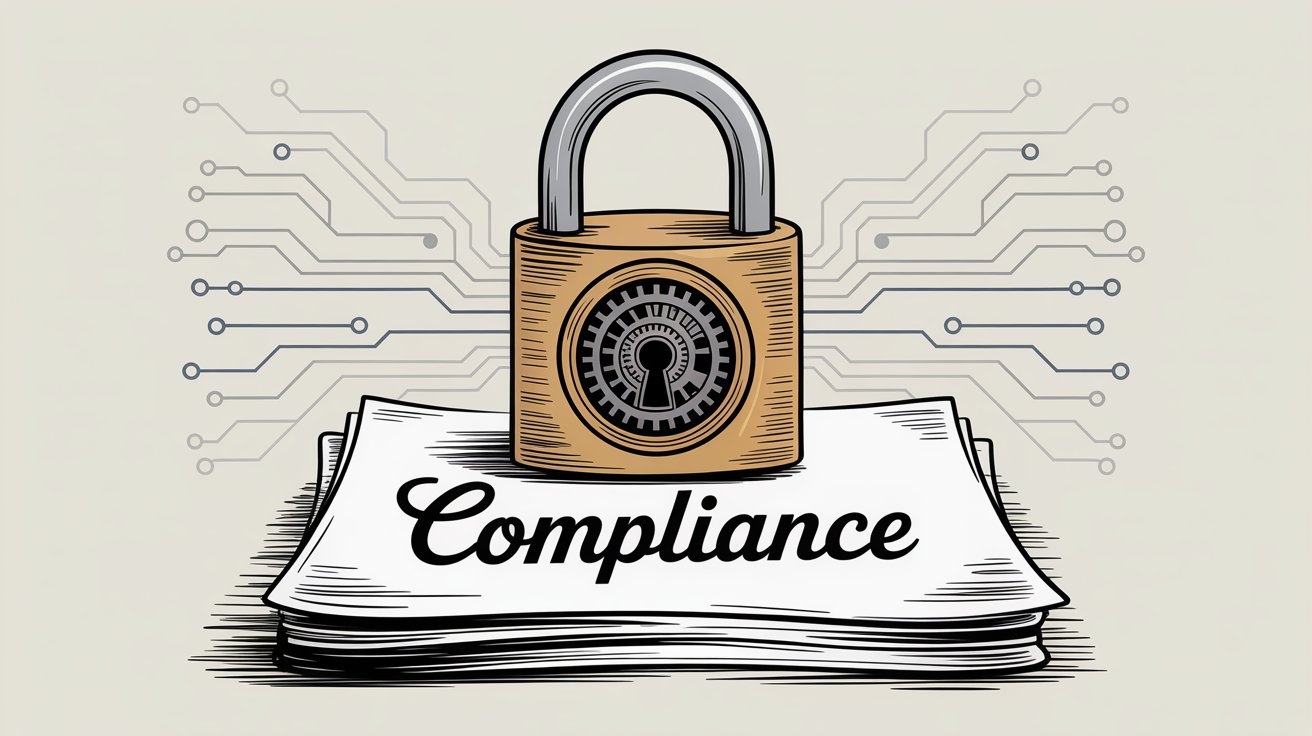
Strengthen technical controls
Common controls to set up:
- Enable multi-factor authentication (MFA) for all internal and production systems (lack of MFA is a frequent gap)
- Centralize log collection and monitoring using a SIEM or logging service with alerts for suspicious activities
- Tighten access rights with least privilege principles using SSO and periodic access reviews
- Set up patch and vulnerability management with automated tools or regular update schedules
- Implement backup and recovery procedures with documented disaster recovery plans
- Configure incident response readiness with detection services or intrusion detection systems

Document everything
As you set up controls, document the changes. Update network diagrams, asset inventories, and risk assessments.
Keep records that serve as evidence: screenshots of MFA settings, change management tickets showing deployment approvals, training attendance logs.
Pro tip: use policy templates where possible. Many free and paid templates exist for SOC 2 that you can customize instead of writing from scratch. Use infrastructure-as-code and automated configuration scans to ensure controls stay enabled.
This phase can take weeks to months depending on your starting point. But every improvement directly enhances your security posture and reduces breach risk.
Step 4: How to Run a Final Gap Assessment Before Your Audit
Think of this as a last-mile check before calling in the auditor. Re-run your gap analysis to verify all previously identified gaps are closed.
Re-review all SOC 2 criteria
For each control area, ensure you have a policy, process, or tool addressing it. Confirm your onboarding/offboarding process is documented. Verify your access control procedures are recorded.
Test your controls internally
Do a mock audit. Ask your team for evidence:
→ "Show me the VPN configuration proving it requires MFA"
→ "Show me last quarter's user access review report"
→ "Where are the logs proving backups ran successfully last week?"
If evidence isn't readily available, you might need to enable more verbose logging or train the team on recording evidence during operations.
Fix remaining issues immediately
Common last-mile fixes include enabling MFA everywhere, ensuring all employees completed security training, fine-tuning monitoring alert thresholds, or conducting an incident response drill.
Modern compliance platforms provide interactive checklists to track your progress through each control requirement:
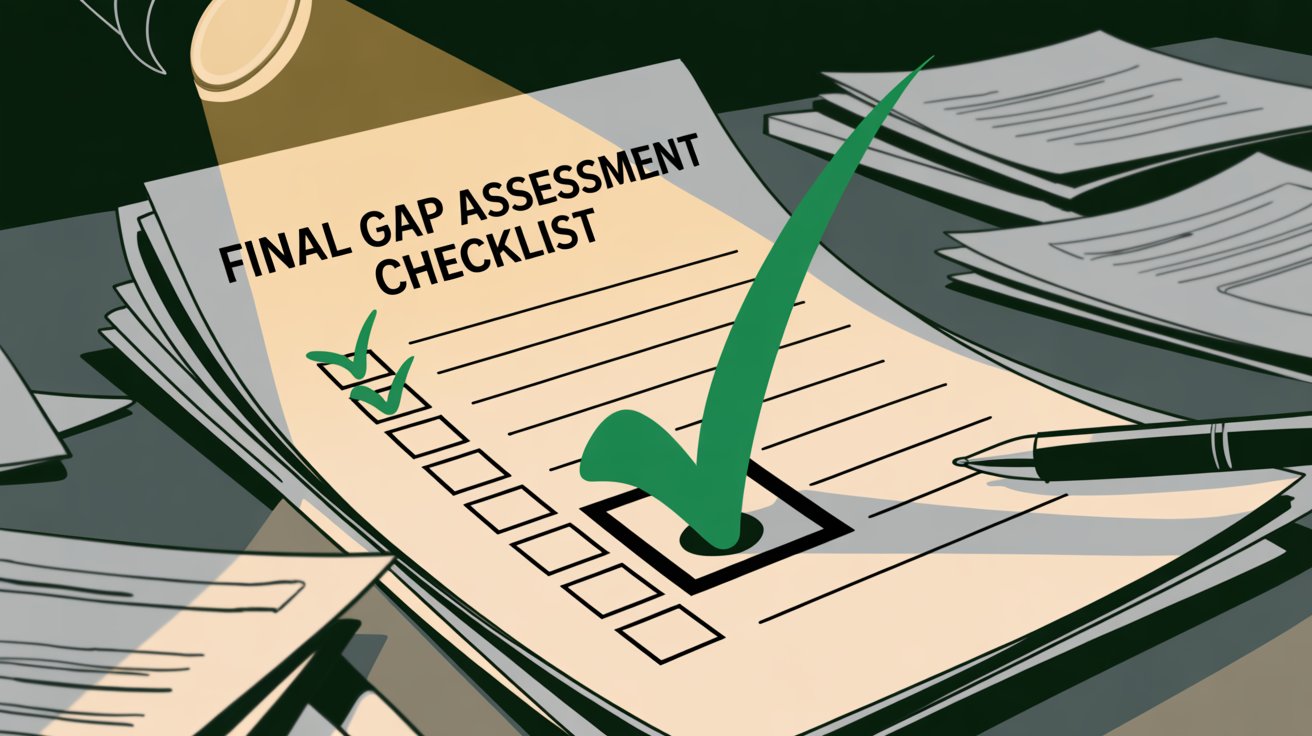
Organize evidence and documentation
Create a SOC 2 audit binder (physical or digital) containing everything the auditor might request. Many firms create a master list of controls mapped to evidence.
By the end of this step, you should feel confident that if the audit started tomorrow, you'd pass. Every issue you resolve now reduces the risk of audit exceptions or failure.
Step 5: What to Expect During Your SOC 2 Audit
Now for the main event. SOC 2 audits must be performed by an accredited independent auditor (specifically, a licensed CPA firm familiar with SOC 2 attestation standards).
Select your auditor
Engage a CPA firm early to schedule audit dates and clarify expectations. When choosing an auditor, consider:
| Factor | What to Look For |
|---|---|
| Experience | Companies of your size and industry |
| Reputation | Big Four firms vs. smaller specialized firms |
| Cost | With Comp AI: $5,000-10,000 (bundled); Traditional: $10K-$60K+ range |
| Accreditation | AICPA accreditation for SOC engagements |
| References | Happy clients with similar needs |
Big Four firms (Deloitte, PwC) are well-known but expensive, often charging $30K-60K+ for SOC 2 audits. Many reputable smaller CPA firms specialize in SOC 2 and offer more affordable approaches in the $10K-20K range.
Platforms like Comp AI bundle auditor access into their $5,000-10,000 all-inclusive pricing, compared to $15,000+ with traditional providers, eliminating the need to separately source and negotiate with auditors.

Audit planning and scoping
The auditor will work with you to define the audit scope formally. They'll send an audit request list covering information and evidence they need: policy documents, risk assessments, organizational charts, system configurations.
Thanks to your preparation, you should have most of it ready.
Fieldwork (the audit itself)
For Type I, testing might be as simple as checking policies exist and interviewing staff or observing configurations on the audit date.
For Type II, testing is more involved. Auditors sample evidence across the entire period:
→ Access logs from multiple months throughout the observation period
→ Quarterly access reviews verified in Q1 and Q2 records
→ Daily backup success logs sampled from random days
They'll also conduct interviews with key personnel to confirm processes.
Provide requested evidence
Your job is to promptly provide whatever auditors request: screenshots, reports, policy excerpts, or demonstrations of processes.
Since you organized evidence in Step 4, you can confidently hand things over. Be honest and transparent. Auditors are generally helpful if you're cooperative. If they find a minor issue, you can often clarify or correct it on the fly.
Audit findings and report
When fieldwork ends, the auditor compiles results. Ideally, you'll get a "clean" SOC 2 report (an unqualified opinion, meaning no major exceptions were found).
The report contains a detailed description of your systems and controls, the tests performed, and their opinion. If the auditor noted exceptions, those will be documented. You typically have a chance to respond or provide a remediation plan for listed issues.
Once finalized, you receive the SOC 2 report (your proof of compliance). This document can be shared with prospective customers (usually under NDA since it contains sensitive information).
Step 6: How to Maintain SOC 2 Compliance After Certification
Congratulations on achieving SOC 2 compliance! But the journey doesn't end with the audit report. SOC 2 is an ongoing commitment to security.
Continuous monitoring
Keep all your security controls running. Monitor systems daily or weekly for anomalies. Review critical logs, track user access changes, watch for security alerts.
Many companies integrate automated monitoring tools or dashboards to stay on top of this. Ongoing monitoring not only keeps you secure but also makes evidence collection easier for the next audit.
Regular internal audits
Perform periodic self-audits (quarterly or biannually) to ensure you're still in compliance. Run through the SOC 2 controls list and verify nothing has lapsed.
If you've had organizational changes (new systems, new offices), assess if those introduce new scope or require control updates.
Policy and procedure updates
Over time, your policies will need updates as technologies or team structures change. Keep them current. If you adopt a new DevOps tool, update your change management or access policy accordingly.
Ensure new employees are onboarded with security policies and training as part of HR processes.
Response to incidents and changes
If a security incident occurs, handle it per your incident response plan and document everything.
Auditors will ask about incidents during the period and how you handled them. A well-handled incident with proper documentation and improvements will keep you in good standing.
Prepare for annual audits
A SOC 2 report is generally valid for 12 months. To avoid any lapse, plan to start the renewal process a couple of months before the current report expires.
The second-year audit is often easier because you have experience and systems from last year. But auditors may raise the bar for anything that was marginal previously.
⚠️ CRITICAL RENEWAL REQUIREMENTIf you had any exceptions in your first audit, fix those well before the next one. Maintaining compliance means baking security and compliance tasks into your regular business rhythm.
Automate reminders for quarterly access reviews, schedule periodic training refreshers, and keep leadership informed of compliance status.

What Documentation Will Auditors Request for SOC 2?
A critical aspect of getting SOC 2 certified is providing the right documentation to your auditor. Here's what you'll typically need:
| Document Category | Examples | Purpose |
|---|---|---|
| Security Policies | Information security policy, access control policy, incident response plan | Demonstrate defined rules and management approval |
| Risk Assessment | Risk register, ratings, mitigation actions | Show proactive threat evaluation |
| Access Control | User access lists, provisioning records, access review reports | Prove appropriate access management |
| Change Management | Jira tickets, version control logs, deployment records | Track tested and approved changes |
| Incident Response | Incident reports, security dashboard, alert logs | Evidence of continuous monitoring |
| Vendor Management | Security questionnaires, certifications, vendor reviews | Third-party risk documentation |
| Audit Logs | CloudTrail logs, VPN logs, security event logs | Recorded security events |
| Training Records | Training slides, attendance lists, certificates | Employee security awareness |
| System Configuration | AWS console screenshots, database configs, MFA settings | Proof of security controls |
Security Policies and Procedures
All formal policies (information security policy, access control policy, incident response plan) and supporting procedures. These demonstrate your defined rules and expectations for security practices. Auditors verify policies exist, cover required areas, and have management approval.
Documentation of your risk assessment process and results. This could be a risk register identifying major risks, their ratings, and mitigation actions. It shows you proactively evaluate and address potential threats.
Access Control Records
Evidence of how you manage access: user access lists for key systems, account provisioning and deprovisioning records, and access rights review reports.
For example, an export of all active employees and their system roles, plus proof you reviewed these for appropriateness last quarter.
Change Management Logs
Records tracking changes to systems and software. This might be tickets from your change management system (Jira) or version control logs, showing changes are tested, approved, and deployed properly.
The auditor may sample a few changes to verify procedures were followed.
Incident Response and Monitoring Evidence
Your incident response plan document, plus any incident reports if incidents occurred. Also, evidence of continuous monitoring: screenshots of your security dashboard, sample alerts, log extracts, or summaries of regular checks you perform.
Vendor Management Documents
A list of critical third-party vendors and due diligence records. For instance, security questionnaires or certifications from vendors, or records of annual vendor risk reviews. Also contracts or NDAs showing confidentiality clauses.
Audit Logs and Activity Records
Logs demonstrating security events are recorded. This could include system audit logs (like AWS CloudTrail logs, VPN access logs, Windows security event logs) and physical access logs if applicable. Centralized log management makes this easier.
Training and Awareness Records
Proof that employees underwent security training and acknowledged policies:
→ Training slides and attendance lists
→ Certificates from online training programs
→ New hire orientation checklists showing security topics covered
System Configuration Settings
Often provided via screenshots or exports:
→ AWS console showing encryption enabled on S3 buckets
→ Database configuration showing backup schedules
→ Admin console showing MFA enforced for all users
Every item should be up-to-date and cover the audit period. Maintain a SOC 2 evidence folder that you update regularly (monthly or quarterly) so everything's ready when audit time comes.

⚠️ AUDITOR INSIGHTAccording to auditors, lack of sufficient documentation is a primary reason companies struggle in SOC 2 audits. If something isn't documented or evidenced, the auditor can't assume it was done. Better to over-document than under-document.
How Long Does SOC 2 Certification Actually Take?
Timeline varies widely based on your readiness and resources. Traditionally, obtaining a SOC 2 Type II certification from scratch can take 6 to 12 months.
Here's where the time goes:
Preparation and remediation
This is the most variable part. If you already have good security practices, you might prep in 1-2 months. If you're building from ground zero, it could take 6+ months to set up everything.
On average, many startups spend 3-4 months on the prep phase for their first SOC 2. Using external consultants or automation software can accelerate this by guiding you on exactly what to do.
Audit observation period (Type II only)
This is the fixed duration (commonly 3, 6, or 12 months) where you operate with controls before the auditor evaluates them. You can't shorten this period (it's inherent to the Type II report).
Many startups opt for a 3-month period for their first Type II to balance speed with credibility. Longer periods (6-12 months) provide deeper operational review but take more calendar time.
Audit execution
The audit itself (fieldwork plus report writing) typically takes several weeks to a couple of months.
| Audit Type | Typical Duration |
|---|---|
| Type I | 1 week testing + 1-2 weeks report = 2-3 weeks total |
| Type II | 1-2 weeks testing + 2-4 weeks report = 4-6 weeks total |
On-site or virtual testing might be 1-2 weeks, then auditors draft the report over a few weeks.
Can it be faster?
Yes, especially the readiness phase. With strong motivation and the right tools, companies have compressed preparation dramatically.
Comp AI combines agentic automation with white-glove guidance to help companies get audit-ready in days or weeks instead of months. The platform automates evidence collection, generates policies, and monitors controls continuously.
With expert support via Slack (5-minute response times), teams can navigate the process without getting stuck on technical details.
Planning your timeline
For planning purposes, be conservative: if a major client expects a SOC 2, start the process at least 6 months ahead of that deadline. You might finish early, but if you hit snags, you won't be caught short.
If you need results sooner, consider doing a Type I first (you could potentially get a Type I report within 2-3 months) and then pursue Type II.
How Much Does SOC 2 Certification Cost in 2025?
SOC 2 compliance represents a significant investment, but modern platforms have dramatically reduced these costs. Let's break down the costs:
| Cost Category | With Comp AI | With Traditional Providers | Notes |
|---|---|---|---|
| Total SOC 2 Cost | $5,000-10,000 | $15,000+ | All-inclusive pricing vs à la carte |
| External Audit | Included | $10,000-60,000+ | Comp AI bundles auditor access |
| Platform Tools | Included | $3,000-30,000+ | Automation vs manual tools |
| Internal Labor | Minimal | Significant | AI automation reduces team burden |
| Ongoing Costs | $5,000-10,000/year | $15,000-50,000+/year | Annual renewal comparison |
External audit fees
This is usually the biggest direct cost with traditional approaches. A SOC 2 audit by a CPA firm can range from $10,000 on the low end to $60,000+ on the high end for a single year's audit.
With Comp AI, audit costs are bundled into the all-inclusive $5,000-10,000 package, eliminating the need to separately engage expensive auditors. Traditional providers typically charge $15,000+ when you factor in platform fees, auditor fees, and consulting time.
For small startups using traditional methods, you might find a reputable auditor in the $10K-$20K range (often for Type I or a limited Type II). For larger scopes or top-tier firms, fees can reach $30K-$40K or higher.
Very large organizations or complex audits (multiple locations, many trust principles) can even reach six figures with traditional approaches.
Remediation and preparation costs
This includes tools, software, or consultant services you use to get ready. With traditional approaches, you might subscribe to a compliance automation platform, buy security tools, or hire a consultant to help write policies.
These traditional costs can range from a few thousand dollars for DIY with some tools, up to tens of thousands if you engage a consulting firm for full-service readiness.
Comp AI's $5,000-10,000 all-in pricing includes the automation platform, policy generation, evidence collection, and expert support, versus traditional providers charging $15,000+ for similar (often more manual) services.
Internal staffing effort
While not a direct dollar outlay, factor the time your team will spend on compliance work. With traditional approaches, this can be substantial: hours writing policies, setting up controls, collecting evidence, and liaising with auditors.
If you're diverting engineers or managers to focus on this, that's an opportunity cost. Comp AI's AI automation dramatically reduces this burden (often by 75%+), while traditional providers at $15,000+ still require significant manual work from your team despite the higher cost.
Continuous costs
After initial certification, ongoing costs include annual audit fees, platform or consultant subscriptions, and investments in security tools.
With Comp AI, annual renewal costs remain in the $5,000-10,000 range, while traditional providers typically charge $15,000-50,000+ annually for renewals.
However, many of those investments also have general security ROI beyond compliance.
Typical budget
With traditional approaches, small tech companies typically spend around $20K-$30K total in out-of-pocket costs for the first year (including a moderately priced audit and tools), plus internal labor. For mid-size companies, $50K+ all-in is common.
Comp AI has changed this equation significantly: most companies achieve SOC 2 compliance for $5,000-10,000 all-in, compared to $15,000+ with traditional providers. This represents savings of 50-70% while actually reducing the time and effort required.
Keep in mind, the cost of NOT being compliant can be higher. Lost deals and security incidents can easily outweigh these expenses.
In fact, Gartner predicts that by 2027, over 90% of SaaS procurement requests will require a security certification like SOC 2 upfront, making it a cost of doing business in B2B tech.
Tips to manage costs
- Shop around for auditors and get multiple quotes
- Use compliance software and templates to reduce expensive consulting hours
- Do Type I first if budget is tight (generally cheaper than Type II)
- Use investor or network connections for discounts
- Avoid scope creep by only including what you need in the audit
Think of SOC 2 as enabling revenue. Many companies recoup the costs quickly by unlocking new customers once they're compliant.

Common SOC 2 Mistakes That Delay Certification
Even with preparation, companies often stumble on these common issues:
Calling it a "certification"
While people commonly use this term, buyers and auditors expect precise language. It's a SOC 2 attestation or report provided by a CPA firm, not a government or ISO certification.
Picking Type II before controls are live
Running a short readiness phase, stabilizing controls, then starting a 3-month Type II period makes for a smoother first audit. Don't commit to a 12-month Type II when your controls are still maturing.
Skipping risk assessment
The Trust Services Criteria are rooted in risk-based controls. Auditors expect an up-to-date risk assessment that drives your control selection and setup.
No evidence cadence
Forgetting quarterly access reviews or restore tests creates gaps that can't be retro-fixed at the end of the period. Set up automated reminders for recurring compliance activities.
Over-scoping
Adding all five Trust Services Categories on day one increases cost and time. Start with what customers actually require. You can expand scope in future audits.
Confusion around vendors
For major subservice organizations (AWS, Okta, Stripe), the carve-out method with clearly stated complementary user entity controls (CUECs) is standard. Know what you're responsible for versus your vendor.
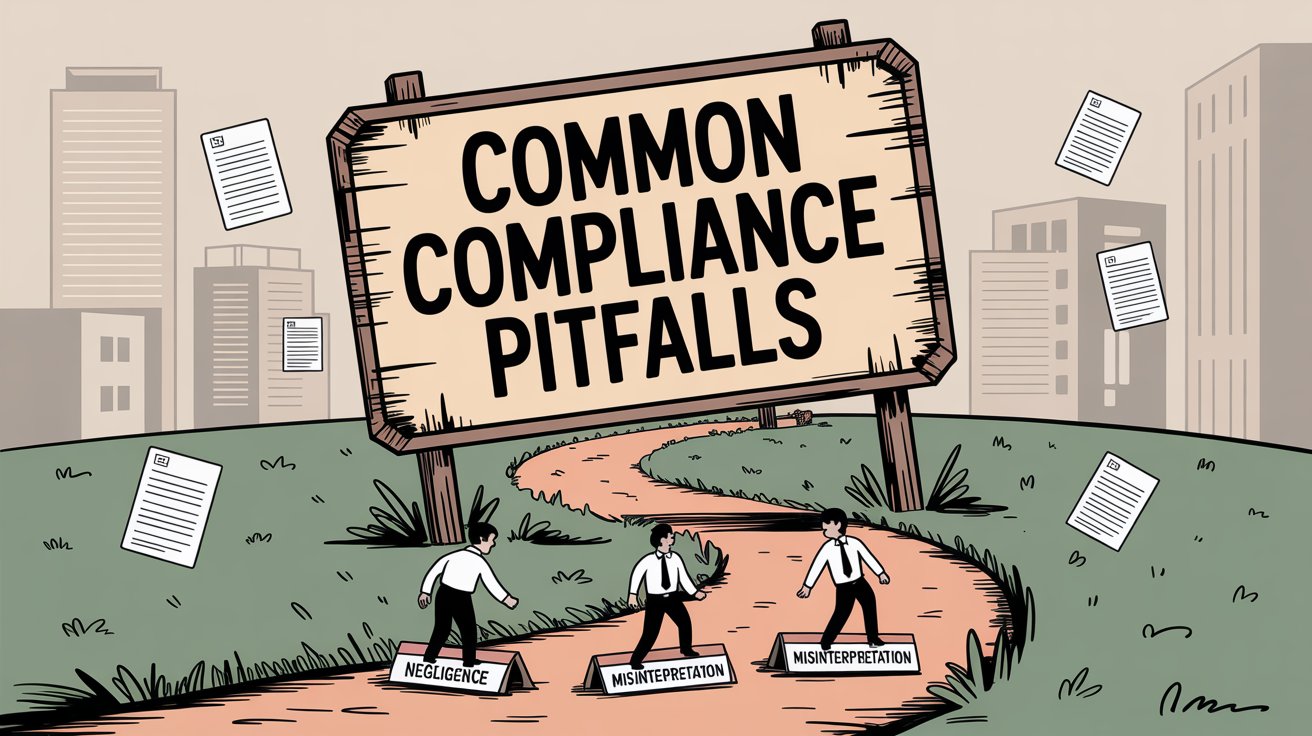
SOC 2 Certification FAQs: Your Questions Answered
Do we get a physical certificate?
No. You receive a SOC 2 report (an attestation) produced by a CPA firm. It's a detailed document, not a framed certificate. You share this report with customers (usually under NDA) to prove compliance.
What's a bridge letter and when do customers ask for it?
A bridge letter (also called a gap letter) covers the time after your report's end date up to a more current date, stating there were no material changes to your controls.
It's common when your report is a few months old during a deal. Important note: it doesn't extend the audit or replace the need for annual renewal.
Is there an AICPA minimum for the Type II observation period?
The AICPA standards don't mandate a strict minimum, but market practice and many customers favor at least 3 months, often 6-12 months as you mature. First-timers commonly start with 3 months.
Must the auditor be a CPA?
Yes. SOC 2 examinations are performed by independent CPA firms in accordance with AICPA standards. There's no self-certification for SOC 2.
Can we use the same evidence for multiple compliance frameworks?
Often yes. Many controls overlap between SOC 2, ISO 27001, and HIPAA.
Platforms like Comp AI are designed to maximize evidence reuse across frameworks, reducing the incremental effort for each additional certification.
How do we handle cloud providers like AWS in our audit?
Most companies use the carve-out method. This means your SOC 2 report describes your use of AWS and documents your complementary user entity controls (CUECs) (the controls you're responsible for on top of what AWS provides).
You don't test AWS's controls directly; they have their own SOC 2 report you can reference.
What happens if we fail the audit?
If auditors find significant control failures, they may issue a qualified opinion (noting the exceptions) or, in severe cases, decline to issue a report.
This is why readiness assessments and mock audits are so important. They help you fix issues before the official audit.
Can we pause our Type II observation period?
No. Once you start the observation period, it runs continuously. If you pause or have significant control failures during the period, you may need to restart the clock with a new period.
How do we share our SOC 2 report with customers?
Most companies use a trust portal or secure document sharing. You'll typically require customers to sign an NDA before accessing the report, since it contains sensitive information about your security controls and systems.
What's the difference between SOC 1, SOC 2, and SOC 3?
SOC 1 focuses on financial controls for service organizations. SOC 2 (what this guide covers) focuses on security, availability, and data protection. SOC 3 is a lighter, public-facing summary of SOC 2 findings that doesn't contain sensitive details.
Your Next Steps for SOC 2 Certification
Getting SOC 2 certified is a significant undertaking, but it's increasingly essential for B2B companies handling customer data.
The process requires planning, setup, and ongoing commitment to security. But the payoff is substantial: enterprise deals unlocked, customer trust earned, and genuine security improvements.
The key is to approach SOC 2 strategically:
- Understand what you're really signing up for (Type I vs Type II, which categories)
- Assess your current state honestly before starting
- Set up controls systematically with proper documentation
- Use automation and expertise to reduce manual effort
- Maintain compliance continuously rather than scrambling annually
If you're ready to accelerate your SOC 2 journey, Comp AI can help you get audit-ready in weeks instead of months.
The platform combines AI-powered automation with white-glove expert support to eliminate the manual busywork while ensuring you build genuine security.
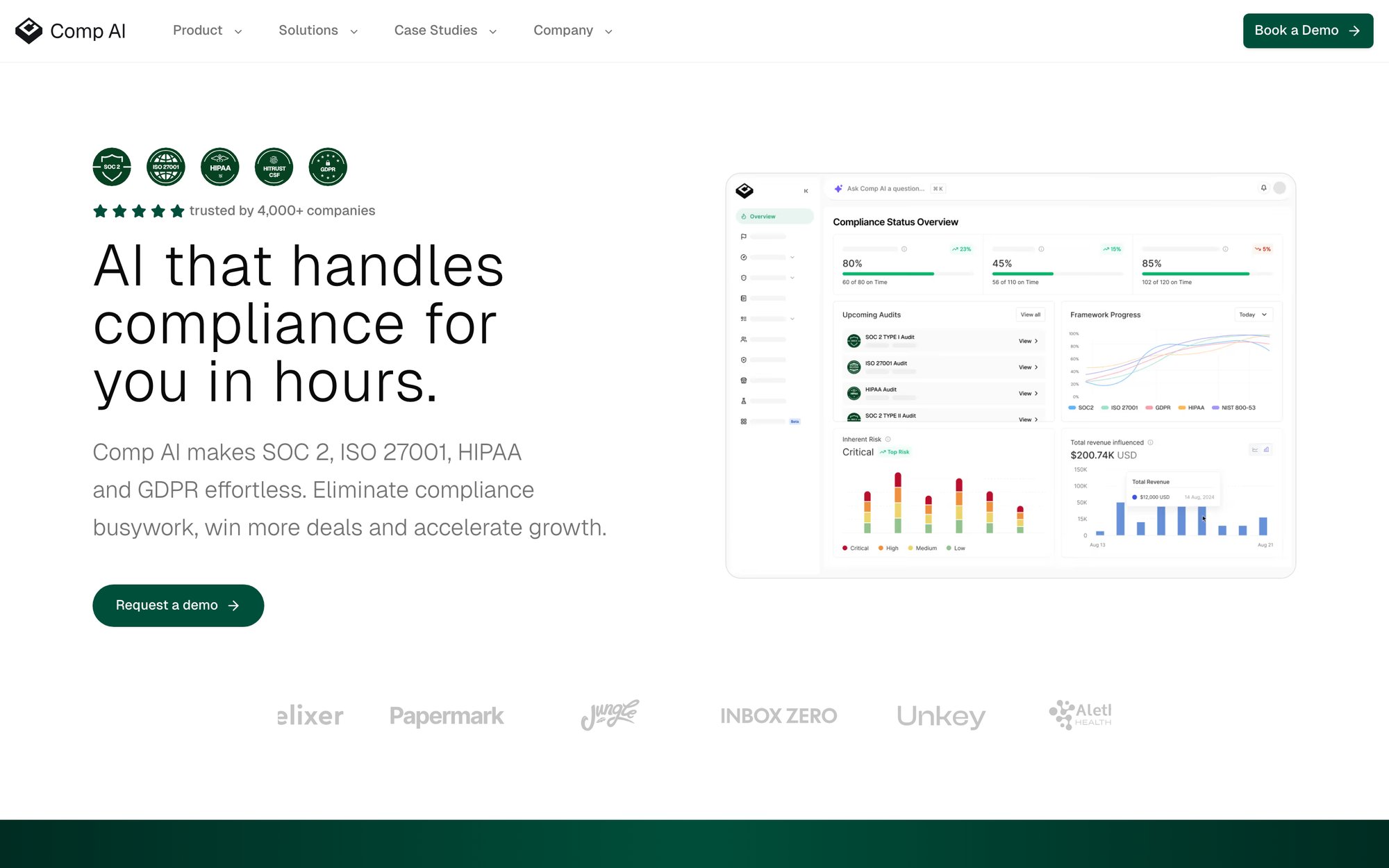
Book a demo with Comp AI to see how other companies are achieving SOC 2 compliance faster and with less internal effort. Your enterprise customers are waiting.
Share this article
Help others discover this content
More from Compliance Hub
Explore more insights and stay ahead of regulatory requirements.
How Much Does SOC 2 Cost? Complete Pricing Breakdown (2025)
Complete SOC 2 cost breakdown for 2025: auditor fees, platform costs, tools, and hidden expenses. Learn how to budget and save with Comp AI.
Compliance Automation Platform: Complete Guide (2025)
Learn how compliance automation platforms compress SOC 2 prep from 6 months to 24 hours using Comp AI. Compare options, pricing, and timelines.
SOC 2 Compliance Checklist: Certification Guide (2025)
Your step-by-step SOC 2 compliance checklist for 2025. Covers policies, controls, evidence collection, and how to achieve certification fast.